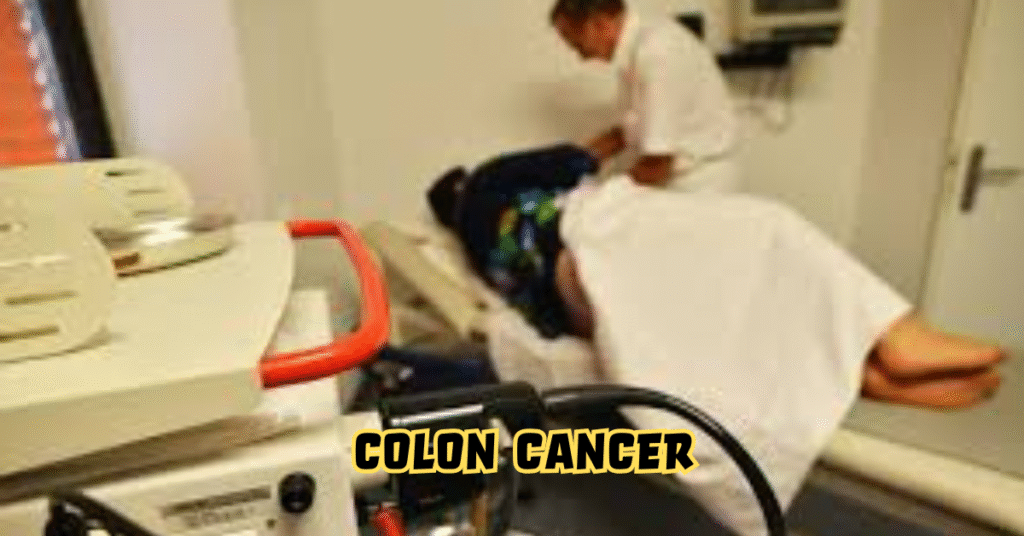In a quiet yet powerful revolution, healthcare systems across the United States are changing how colon cancer is detected and prevented. Instead of relying solely on hospital-based screenings or invasive procedures, many health organizations are now mailing colon cancer test kits directly to patients’ homes. The question is simple yet profound: why?
The answer lies at the intersection of accessibility, technology, and a renewed understanding of preventive care. Colon cancer, or colorectal cancer, is one of the most preventable forms of cancer when caught early. However, millions of Americans avoid colonoscopies due to fear, inconvenience, or lack of access. By mailing tests that can be done privately at home, healthcare providers hope to bridge that gap—making screening simpler, faster, and more equitable.
“Health innovation isn’t just about new machines,” says Dr. Michael Hensley, a public health specialist at Johns Hopkins University. “It’s about removing barriers so that more people can take control of their health before disease takes control of them.”
As this quiet transformation unfolds, it reveals not just a medical shift but also a cultural one—toward patient empowerment and preventive vigilance. The movement to send colon cancer tests by mail is, in many ways, reshaping the narrative of early detection in modern medicine.
The Rising Importance of Early Detection
Colon cancer remains the second leading cause of cancer-related deaths in the United States. Yet, it is also one of the most curable if detected early. According to health experts, when found in its earliest stages, colon cancer has a survival rate exceeding 90%. Unfortunately, the problem isn’t the treatment—it’s the screening rate.
In many communities, screening participation has historically been low. Factors such as cost, distance to medical facilities, cultural stigma, or simple discomfort have prevented people from scheduling colonoscopies. By contrast, mailed testing kits are discreet, inexpensive, and user-friendly. They offer an entry point for those hesitant about in-person screening.
Dr. Karen Li, a gastroenterologist in Boston, explains, “If you can test yourself for COVID-19 or monitor your blood sugar at home, you can absolutely screen for colon cancer. It’s about making prevention part of daily life.”
Table 1: Comparison of Colon Cancer Screening Methods
| Screening Type | Invasiveness | Setting | Accuracy | Recommended Frequency | Cost Range (USD) |
|---|---|---|---|---|---|
| Colonoscopy | High | Clinic/Hospital | Very High | Every 10 years | $800–$3,000 |
| FIT (Fecal Immunochemical Test) | None | Home | Moderate–High | Every year | $20–$50 |
| Cologuard (DNA Stool Test) | None | Home | High | Every 3 years | $500–$700 |
| Sigmoidoscopy | Moderate | Clinic | High | Every 5 years | $400–$800 |
Why Mailed Tests Are Becoming the New Normal
The movement toward at-home testing was accelerated by lessons learned during the COVID-19 pandemic. Healthcare systems realized that many people could safely and accurately perform medical tests at home. Mailing colon cancer tests follows the same principle—trusting patients with their own preventive care.
These kits typically include all materials needed to collect a small stool sample, which is then mailed back to a lab in a prepaid envelope. The results are shared electronically or via phone within days. It’s a process that takes less than 20 minutes and removes nearly every traditional barrier to screening.
Moreover, health insurance providers now recognize mailed screening programs as cost-effective. Early detection means lower treatment costs and higher survival rates. “It’s a public health win and an economic win,” says Dr. Emily Carter, who leads a preventive care initiative in Oregon.
Technology Meets Preventive Medicine
The success of mailed testing kits also lies in modern biotechnology. The Fecal Immunochemical Test (FIT) and the stool DNA test (like Cologuard) are highly advanced. They detect blood or abnormal DNA associated with colon polyps or cancer long before symptoms appear.
Unlike earlier guaiac-based tests, which often produced false positives, today’s technology offers sensitivity rates above 90% for detecting early-stage cancer. This precision allows doctors to recommend colonoscopies only for patients who test positive—making healthcare more targeted and efficient.
“The accuracy of today’s non-invasive tests is remarkable,” says Dr. Rajesh Patel, a clinical pathologist. “It’s a technological leap that could help eliminate late-stage colorectal cancer within a generation.”
A New Kind of Healthcare Equity
One of the strongest arguments for mailing tests lies in healthcare equity. For years, lower-income families, rural residents, and communities of color have faced obstacles in accessing cancer screenings. Many work long hours or live far from medical centers.
Mailed test kits level the field. They arrive directly at home, eliminating transportation issues and appointment scheduling. For many, it’s the first time preventive medicine has felt personal and attainable.
“Accessibility isn’t charity—it’s justice,” emphasizes Dr. Monica Reyes, a health policy researcher. “When people have equal tools to protect their health, society moves closer to genuine fairness.”
Table 2: Impact of Mailed Screening Kits on Healthcare Access
| Demographic Group | Screening Rate Before (2015) | Screening Rate After Mailing Programs (2024) | Improvement (%) |
|---|---|---|---|
| Rural Residents | 49% | 73% | +24% |
| Low-Income Households | 38% | 68% | +30% |
| Black and Hispanic Adults | 45% | 71% | +26% |
| National Average | 61% | 82% | +21% |
Behavioral Psychology Behind Participation
While logistics play a part, psychology is equally critical. Many people delay colonoscopies out of fear or embarrassment. A test that arrives in a plain envelope and can be done privately removes much of that emotional burden.
Health behavior experts call this a “nudge-based intervention.” It doesn’t force compliance; it encourages action through convenience and normalization. Studies show that when patients receive a kit by mail—often accompanied by a reminder call—completion rates nearly double.
As one patient, 52-year-old Sarah McConnell from North Carolina, put it: “I had put off getting screened for years. But when the test came to my mailbox, I just did it that evening. It felt like a sign.”
How Health Systems Are Scaling the Program
Major healthcare organizations—such as Kaiser Permanente, Intermountain Health, and the Mayo Clinic—have begun to standardize mailed testing. These programs integrate with electronic health records, automatically identifying patients due for screening and mailing them kits without requiring a doctor’s visit.
This automation not only saves administrative time but also ensures that no one slips through the cracks. Follow-up reminders, text messages, and even online portals now track completion rates in real-time. It’s healthcare that is proactive rather than reactive.
“Digital coordination is the backbone of this movement,” notes IT healthcare analyst Sandra Mitchell. “Without it, mailing tests at scale would be chaotic. With it, we can personalize outreach to millions of patients.”
The Cultural Transformation of Preventive Care
For decades, the conversation around colon cancer was clinical and uncomfortable. Today, it’s entering everyday life. Health campaigns, celebrity advocates, and even social media influencers are normalizing discussions about digestive health and screenings.
“Prevention used to feel like a chore,” says Dr. Hensley. “Now it’s becoming part of lifestyle culture—the same way we talk about fitness or diet.”
The broader effect is profound: by making preventive care accessible and relatable, society shifts from treating disease to preserving wellness.
Challenges and Limitations
Despite its promise, mailed testing isn’t perfect. Some kits are lost in transit, while others are improperly used or forgotten. Follow-up colonoscopies after positive results remain essential, yet some patients fail to schedule them.
Moreover, mailed tests detect most—but not all—forms of colon abnormalities. Doctors stress that home kits supplement rather than replace in-person examinations. “This isn’t a one-size-fits-all solution,” cautions Dr. Li. “It’s a bridge to get more people engaged in screening.”
Healthcare providers are also exploring multilingual instructions, phone support, and digital tutorials to ensure usability across diverse populations.
Looking Ahead: The Next Decade of At-Home Diagnostics
The success of mailed colon cancer tests is inspiring other screening innovations—from at-home cervical cancer tests to AI-based skin lesion scanners. The vision is clear: healthcare will increasingly meet people where they are, both physically and emotionally.
In the next decade, mailed diagnostics could become standard for many diseases, allowing earlier detection and easing the burden on hospitals. The colon cancer initiative, in that sense, may just be the beginning of a new preventive paradigm.
As Dr. Patel summarizes: “We’re entering an age where your mailbox is part of your healthcare system.”
Conclusion
The rise of mailed colon cancer tests represents more than a logistical change—it’s a transformation in how we think about health responsibility and access. By bringing screening to the doorstep, the medical community has redefined prevention as a shared effort between doctor and patient.
Colon cancer, once feared for its silent progression, is now being outpaced by silent innovation. Every test mailed and every sample returned marks not just a data point but a step toward a future where early detection is universal.
In an era when medicine often feels impersonal, this movement reminds us that the simplest ideas—like sending a small test kit through the mail—can save the most lives.
FAQs
1. How accurate are at-home colon cancer tests?
Modern at-home tests, such as FIT and Cologuard, detect blood or abnormal DNA with over 90% accuracy for early-stage cancer.
2. How often should someone use a mailed test kit?
FIT tests are recommended annually, while DNA stool tests like Cologuard are generally advised every three years.
3. Are these mailed tests covered by insurance?
Yes, most insurance plans and Medicare now cover at-home colon cancer screening tests without copays.
4. What happens if my test result is positive?
You will be referred for a diagnostic colonoscopy to identify and remove potential polyps or confirm a diagnosis.
5. Can mailed tests replace colonoscopies entirely?
No. They complement colonoscopies by increasing participation in screening. A colonoscopy remains essential after any positive test result.







